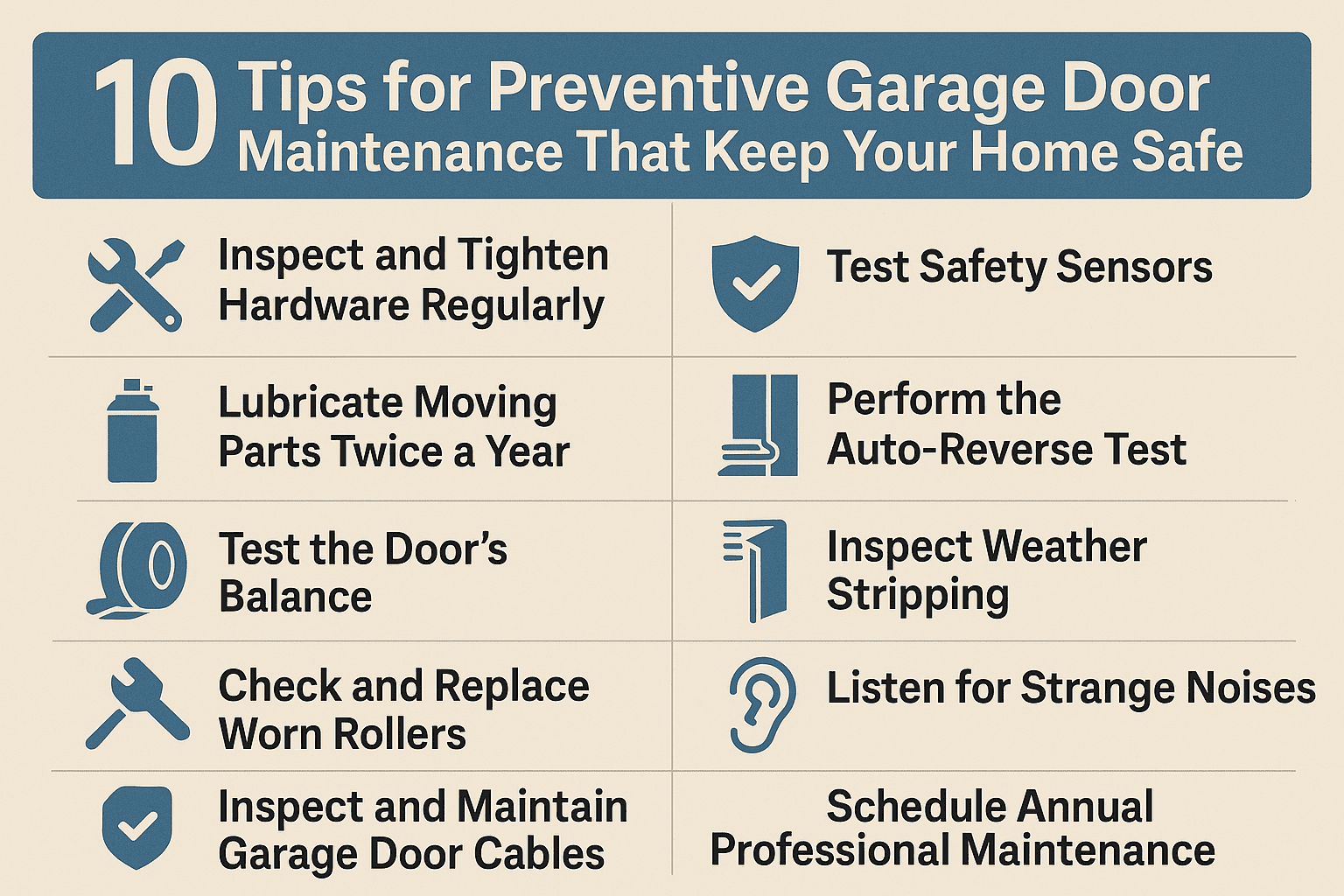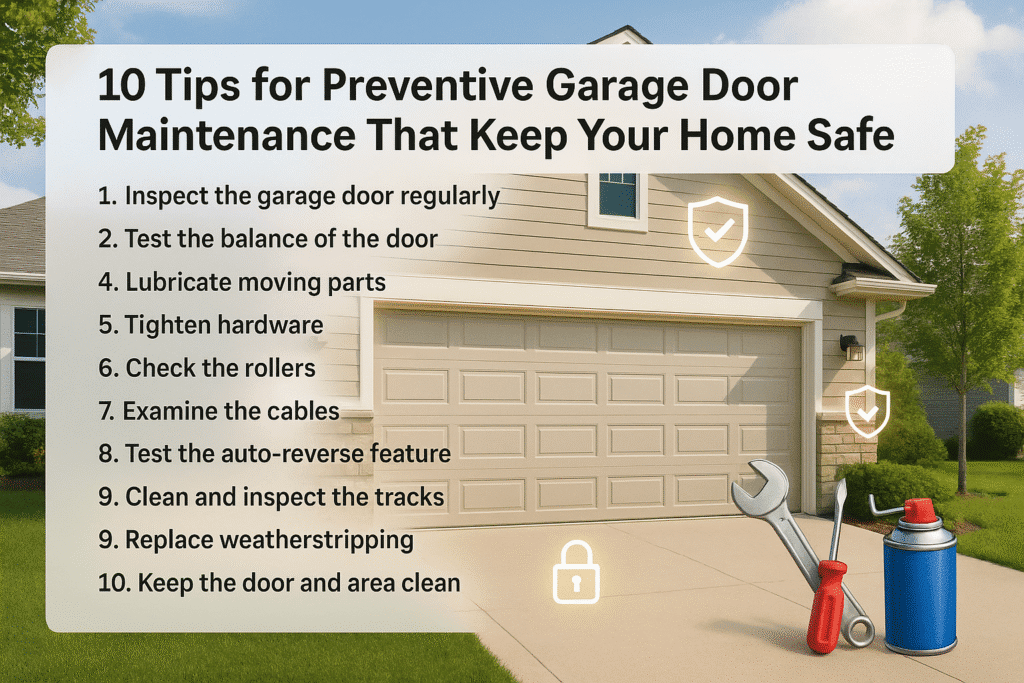10 Tips for Preventive Garage Door Maintenance That Keep Your Home Safe
Your garage door is more than just an entry point—it’s a vital part of your home’s security, convenience, and safety. Yet, it’s often one of the most overlooked systems in the house. Without regular upkeep, small garage door issues can escalate into costly repairs or even dangerous accidents.

The good news? Preventive garage door maintenance is simple, effective, and ensures that your door operates safely and smoothly for years to come. Let’s dive into the 10 most important preventive tips every homeowner should follow.
1. Inspect and Tighten Hardware Regularly
Your garage door moves thousands of times a year, which naturally loosens nuts, bolts, and screws. A quick tightening with a wrench helps prevent unnecessary strain on parts and keeps your door properly aligned.
2. Lubricate Moving Parts Twice a Year
Friction is a garage door’s worst enemy. Apply silicone-based lubricant or lithium grease to:
Rollers
Hinges
Springs
Tracks (lightly)
This reduces wear, prevents squeaking, and ensures smoother operation.
3. Test the Door’s Balance
An unbalanced door puts stress on the opener and can shorten its lifespan.
How to test:
Disconnect the opener by pulling the release handle.
Manually lift the door halfway.
If it doesn’t stay in place, the springs may need adjustment by a professional.
4. Check and Replace Worn Rollers
Rollers are tiny yet necessary. Check them for wear, chipping, or cracks twice a year. Steel rollers need to be lubricated frequently, whereas nylon rollers are smoother and quieter.
Every five to seven years, or sooner if damaged, replace them.
5. Inspect and Maintain Garage Door Cables
The cables are under tremendous strain and support the weight of the door. Check for obvious wear, corrosion, or fraying.
♠️ Safety Tip: Always call a qualified garage door technician before attempting to replace or repair wires yourself.

6. Test Safety Sensors
Safety sensors prevent accidents by stopping the door if something blocks its path.
Ensure both sensors are aligned.
Clean lenses with a soft cloth.
Check for steady indicator lights (no blinking).
7. Perform the Auto-Reverse Test
Every opener has a safety auto-reverse function. Test it monthly by:
Placing a block of wood under the door.
Closing the door to see if it reverses on contact.
If it doesn’t, adjust the opener’s force settings or call a professional.
8. Inspect Weather Stripping
Weather stripping keeps out drafts, pests, and moisture. Check the rubber seal along the bottom of your door. If it’s cracked or brittle, replace it to improve insulation and energy efficiency.
9. Listen for Strange Noises
Grinding, squeaking, or popping noises are red flags. They may indicate issues with springs, rollers, or alignment. Don’t ignore unusual sounds—catching them early can save you costly repairs.
10. Schedule Annual Professional Maintenance
While DIY checks are essential, a professional garage door inspection ensures that critical parts like springs, cables, and openers are tested thoroughly. Technicians can spot early warning signs and prevent sudden breakdowns.
Why Preventive Garage Door Maintenance Matters
Safety First: Prevents accidents from faulty springs or sensors.
Cost Savings: Fixing small issues early avoids expensive repairs.
Longevity: Keeps your garage door system running for 15–20 years.
Home Security: A well-maintained door is harder for intruders to breach.
Peace of Mind: No surprises when you need your garage door most.
Conclusion
Your garage door is the largest moving system in your home, and it deserves regular attention. By following these 10 preventive garage door maintenance tips, you’ll ensure safe operation, avoid costly breakdowns, and extend the life of your door.
Combine your DIY checks with an annual professional tune-up, and you’ll have a secure, smooth, and worry-free garage system that keeps your home and family safe.
